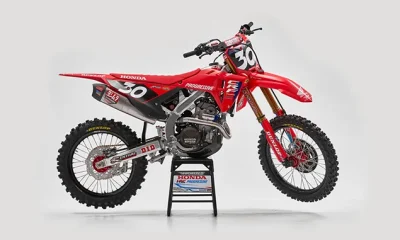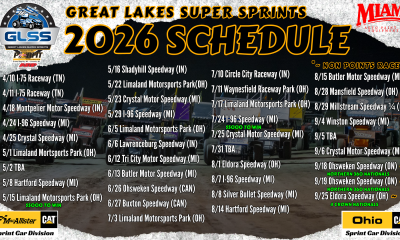Technology
Online Gaming Market Set to Grow at 10.5% CAGR Through 2032,


Online Gaming Market
The global online gaming market is witnessing an explosive transformation, driven by technological innovation, increased internet penetration, and the integration of immersive experiences. In 2025, the market is estimated to be valued at US$ 29.5 billion, and it is projected to more than double by 2032, reaching US$ 59.2 billion, growing at a CAGR of 10.5%. This exponential growth is underpinned by rising mobile usage, the popularity of esports, and the monetization of in-game assets through NFTs and blockchain.
Mobile gaming has emerged as the leading segment, holding 45% of the market share in 2025. Asia Pacific dominates the market, projected to hold a 39% share, propelled by technological advancement, massive smartphone penetration, and a large young population engaged in gaming. North America follows closely, with a 27.4% market share, primarily due to the presence of leading players and early adoption of new gaming technologies.
Elevate your business strategy with comprehensive market data. Request a sample report now: https://www.persistencemarketresearch.com/samples/23314
Key Highlights from the Report
• In 2025, adventure games are estimated to capture 29% of the market, driven by AR and VR integration.
• Mobile platforms held the largest share in 2025, at 45%, due to accessibility and user-friendly interfaces.
• North America accounts for 27.4% of the market share, driven by robust infrastructure and top-tier developers.
• Asia Pacific leads with 39% share, backed by rapid mobile gaming growth and innovation hubs.
• The rise of esports is enhancing revenue streams through sponsorship and professional tournaments.
• Integration of NFTs and cryptocurrency is opening up innovative monetization avenues in gaming.
Market Segmentation: Diverse Preferences Shaping Offerings
The online gaming market is segmented by game type, platform, and user demographics. Adventure games are expected to dominate, driven by immersive experiences offered through AR/VR. Role-playing games (RPGs) and multiplayer online battle arenas (MOBAs) are also gaining traction among younger audiences seeking collaborative and competitive formats. The diversity in content allows developers to cater to a wide range of player preferences.
Platform-wise, mobile gaming remains the dominant segment, owing to the affordability and availability of smartphones. Consoles and PCs, although niche, are preferred by gamers seeking performance and graphics-intensive experiences. Cloud gaming is an emerging category with the potential to transform access by removing hardware dependency, especially in developing nations.
Regional Insights: A Closer Look at Growth Frontiers
Asia Pacific leads the online gaming market, thanks to vast user bases in China, India, and Southeast Asia. Governments in the region are also investing in digital infrastructure, encouraging esports tournaments, and partnering with developers, which further fuels growth.
North America, home to tech giants and top gaming studios, benefits from early adoption of advanced technologies and high disposable income. Esports leagues and professional tournaments are more mainstream here, and the region is a hub for VR and cloud gaming innovation.
Market Drivers Fueling Global Growth
The proliferation of smartphones and the expansion of 5G infrastructure are key drivers, making high-quality gaming experiences accessible on-the-go. The growth of esports has transformed gaming from a hobby into a profession, attracting investments from tech firms, advertisers, and streaming platforms. Additionally, blockchain integration in games like “The Sandbox” and “Axie Infinity” allows players to own, trade, and earn from in-game assets, creating new revenue models.
Market Restraints Hindering Rapid Expansion
Despite its impressive trajectory, the market faces several restraints. Regulatory challenges in regions like China, where gaming hours are restricted for minors, can limit user growth. Additionally, cybersecurity concerns and increasing in-game purchases leading to potential addiction are raising ethical and parental concerns. Fragmentation in hardware compatibility also affects seamless user experiences across platforms.
Emerging Opportunities in the Market
As developers tap into metaverse gaming and cross-platform gameplay, opportunities abound for innovation. The use of AI for personalized gameplay, expansion into educational gaming, and the rise of cloud gaming are potential goldmines. In-game advertising and partnerships with celebrities or franchises can further drive user engagement and monetization.
# Frequently Asked Questions (FAQs)
How Big is the Online Gaming Market in 2025?
Who are the Key Players in the Global Online Gaming Market?
What is the Projected Growth Rate of the Online Gaming Market from 2025 to 2032?
What is the Market Forecast for Online Gaming by 2032?
Which Region is Estimated to Dominate the Online Gaming Industry through the Forecast Period?
Company Insights: Key Players and Recent Developments
• Tencent Holdings Ltd.
• Activision Blizzard Inc.
• Electronic Arts Inc. (EA)
• Epic Games Inc.
• Ubisoft Entertainment SA
• Sony Interactive Entertainment LLC
• Microsoft Corporation
• NetEase Inc.
• Nintendo Co., Ltd.
• Take-Two Interactive Software, Inc.
Recent Developments:
• In early 2025, Tencent launched an AI-powered matchmaking system for PUBG Mobile, enhancing user engagement through balanced gameplay.
• Activision Blizzard announced a strategic partnership with YouTube Gaming to exclusively stream its esports tournaments, reinforcing its market presence.
Conclusion
The online gaming market is at the frontier of digital entertainment, with emerging technologies such as cloud computing, NFTs, blockchain, AR/VR, and AI reshaping the landscape. With a forecasted value of US$ 59.2 billion by 2032, the sector presents massive opportunities for stakeholders across the value chain-from developers and marketers to investors and consumers. As mobile gaming, esports, and gamified economies evolve, the future of online gaming is not only about playing but also earning, connecting, and creating.
Contact Us:
Persistence Market Research
G04 Golden Mile House, Clayponds Lane
Brentford, London, TW8 0GU UK
USA Phone: +1 646-878-6329
UK Phone: +44 203-837-5656
Email: sales@persistencemarketresearch.com
Web: https://www.persistencemarketresearch.com
About Persistence Market Research:
At Persistence Market Research, we specialize in creating research studies that serve as strategic tools for driving business growth. Established as a proprietary firm in 2012, we have evolved into a registered company in England and Wales in 2023 under the name Persistence Research & Consultancy Services Ltd. With a solid foundation, we have completed over 3600 custom and syndicate market research projects, and delivered more than 2700 projects for other leading market research companies’ clients.
Our approach combines traditional market research methods with modern tools to offer comprehensive research solutions. With a decade of experience, we pride ourselves on deriving actionable insights from data to help businesses stay ahead of the competition. Our client base spans multinational corporations, leading consulting firms, investment funds, and government departments. A significant portion of our sales comes from repeat clients, a testament to the value and trust we’ve built over the years.
This release was published on openPR.
Technology
Brightspeed invests $580,000 in STEM and esports, supporting North Carolina schools and programs — EdTech Innovation Hub

The new funding announced will support schemes including $350,000 in sponsorship of the Coca Cola All Stars Golden Ticket contest, Formula STEM Esports Cup and the Player League Madden NFL tournament.
Brightspeed will also act as a primary sponsor for two Bright Future Tech Labs in Triton High School and Orange High School, with funding worth more than $200,000.
The company will also spend $15,000 on scholarships, equipment, and esports program travel for Wesleyan University and $10,000 on a grant supporting the Rocky Mount High School Gryphon Elite esports team.
Brightspeed has also announced sponsorship for the Wake Forest Parks, Recreation and Cultural Resources Department’s four-part esports tournament, called the Battle in the Forest.
“Investing in technology education and esports is a natural extension of our commitment to North Carolina,” explains Sabrina Anderson, Local Marketing Manager at Brightspeed.
“As we build a world-class fiber network across our home state, we’re equally focused on expanding opportunities for the students who will power our communities tomorrow. These initiatives give young people hands-on access to the tools, skills and experiences that prepare them for the digital future.”
“This scholarship will help ease the financial burden my parents carry in supporting my academic journey,” adds Shafiq Nuijts, a Wesleyan University student and recipient of Brightspeed funded scholarship. “It will also allow me to focus more deeply on my education and my internship this upcoming summer. As an international student, my experience has always involved balancing the challenges of maintaining my F-1 status, keeping a high GPA and reassuring my parents that their investment in me is being put to meaningful use. This scholarship affirms that commitment and motivates me to continue striving for excellence.”
Technology
Gaming Computers Market to Reach USD 95 Billion by 2034, Growing


Gaming Computers Market
Pune, India – Exactitude Consultancy – The global Gaming Computers Market is expected to witness strong growth over the forecast period, driven by the rising popularity of esports, increasing demand for high-performance computing, and continuous advancements in graphics and processor technologies. The market, valued at approximately USD 44 billion in 2024, is projected to reach nearly USD 95 billion by 2034, expanding at a compound annual growth rate (CAGR) of about 7.9%.
Gaming computers, including desktops and laptops, are designed to deliver superior performance, high-resolution graphics, and fast processing speeds to support immersive gaming experiences. Growing online gaming communities and professional gaming platforms are further accelerating market growth.
Download Full PDF Sample Copy of Market Report
https://exactitudeconsultancy.com/request-sample/69340
Key Growth Drivers
• Rapid Growth of Esports and Online Gaming: Competitive gaming tournaments and streaming platforms are boosting demand for high-performance gaming systems.
• Advancements in Hardware Technology: Continuous improvements in GPUs, CPUs, cooling systems, and memory are enhancing gaming performance.
• Rising Disposable Income: Increasing consumer spending on premium electronics is supporting adoption of gaming computers.
• Expansion of Virtual and Augmented Reality Gaming: Demand for powerful computing systems to support VR and AR applications is increasing.
Market Segmentation Insights
By product type, gaming desktops hold a significant share due to superior customization and performance, while gaming laptops continue to gain popularity for portability.
By price range, mid-range and high-end systems dominate the market, driven by demand from professional and enthusiast gamers.
By end user, individual consumers account for the largest share, followed by gaming cafes and esports organizations.
Explore Full Report here:
https://exactitudeconsultancy.com/reports/69340/gaming-computers-market
Regional Overview
Asia-Pacific represents the largest and fastest-growing regional market, supported by a large gamer population, strong esports culture, and expanding gaming infrastructure in countries such as China, South Korea, Japan, and India.
North America shows strong growth driven by high adoption of advanced gaming hardware and a mature esports ecosystem.
Europe continues to expand steadily due to rising gaming participation and technological innovation.
Latin America and the Middle East & Africa are emerging regions, supported by increasing internet penetration and growing gaming communities.
Get Your Exclusive Offer with up to 10% Discount
https://exactitudeconsultancy.com/checkout/?currency=USD&type=single_user_license&report_id=69340
Competitive Landscape
The gaming computers market is highly competitive, with major players focusing on performance optimization, innovative designs, and brand partnerships. Companies are investing in advanced cooling technologies, RGB customization, and AI-enabled performance tuning to differentiate their offerings.
Market Outlook
With the gaming industry continuing to evolve rapidly, the Gaming Computers Market is expected to experience sustained growth through 2034. Increasing esports adoption, next-generation gaming technologies, and expanding digital entertainment consumption will remain key drivers of market expansion.
This report is also available in the following languages : Japanese (ゲーミングコンピュータ市場), Korean (게이밍 컴퓨터 시장), Chinese (游戏电脑市场), French (Marché des ordinateurs de jeu), German (Markt für Gaming-Computer), and Italian (Mercato dei computer da gioco), etc.
Request for a sample of this research report at (Use Corporate Mail ID for Quick Response) @
https://exactitudeconsultancy.com/request-sample/69340
Our More Reports:
Redundant EPS System Market
https://exactitudeconsultancy.com/reports/69077/redundant-eps-system-market
InGaAs Image Sensors Market
https://exactitudeconsultancy.com/reports/68951/ingaas-image-sensors-market
Ceramic Electrostatic Chucks Market
https://exactitudeconsultancy.com/reports/68953/ceramic-electrostatic-chucks-market
Electrical Wires Market
https://exactitudeconsultancy.com/reports/68955/electrical-wires-market
About Us
Exactitude Consultancy is a market research & consulting services firm which helps its client to address their most pressing strategic and business challenges. Our market research helps clients to address critical business challenges and also helps make optimized business decisions with our fact-based research insights, market intelligence, and accurate data.
https://bulletin.exactitudeconsultancy.com/
https://www.thehealthanalytics.com/
https://www.analytica.global/
https://www.marketintelligencedata.com/
https://www.marketinsightsreports.com/
https://exactitudeconsultancy.com/
Connect Us:
Irfan Tamboli
PHONE NUMBER +1 (704) 266-3234
EMAIL ADDRESS: sales@exactitudeconsultancy.com
This release was published on openPR.
Technology
EAG Expo to Bring Together Three Interlinked Sectors of Entertainment and Gaming in a Single Venue

Our website uses cookies, as almost all websites do, to help provide you with the best experience we can.
Cookies are small text files that are placed on your computer or mobile phone when you browse websites.
Our cookies help us:
– Make our website work as you’d expect
– Remember your settings during and between visits
– Offer you free services/content (thanks to advertising)
– Improve the speed/security of the site
– Allow you to share pages with social networks like Facebook
– Continuously improve our website for you
– Make our marketing more efficient (ultimately helping us to offer the service we do at the price we do)
We do not use cookies to:
– Collect any personally identifiable information (without your express permission)
– Collect any sensitive information (without your express permission)
– Pass personally identifiable data to third parties
– Pay sales commissions
Technology
Sultan Almasoud on the Top Trends in Technology and Esports in Saudi Arabia – Tech & Sourcing @ Morgan Lewis

Dr. Sultan Almasoud, managing partner of Morgan Lewis’s Riyadh office, has been closely involved in the Kingdom of Saudi Arabia’s rapid evolution into a global hub for innovation. His insights on the questions below shed light on the trends reshaping technology and esports—and the opportunities they unlock for investors and operators entering the market.
Q&A: SULTAN ALMASOUD
1. What are the most significant technology trends currently driving growth in Saudi Arabia?
Saudi Arabia is undergoing one of the most ambitious digital transformation journeys in the world. The most significant trend is the rapid adoption of AI across government, financial services, healthcare, and industrial sectors. Vision 2030 has accelerated investment in AI-ready infrastructure, digital identity, automation, and data platforms that support new digital services at scale.
We also are seeing strong momentum in cloud migration, driven by hyperscaler expansions, data localization policies, and new solutions that make it easier for public and private entities to adopt cloud-native technologies. In parallel, fintech innovation, digital payments, and open banking are creating a dynamic ecosystem of startups, investors, and regulators working together to modernize the financial landscape.
In addition, Saudi Arabia’s giga projects are acting as large-scale accelerators for advanced technologies, while strong regulatory frameworks around data, cloud, and cybersecurity are providing international investors with clarity and confidence. Combined with significant investment in digital talent and localization, this is enabling sustainable, long-term technology-driven growth across the Kingdom.
2. How is Saudi Arabia positioning itself as a global hub for esports?
Saudi Arabia has made esports a national priority, fundamentally reshaping the sector. The launch of the Saudi Esports Federation (SEF) and the Esports World Cup, supported by major public investment commitments, has placed the Kingdom at the center of global competitive gaming.
But the strategy extends beyond events. The country is developing training academies, production studios, esports arenas, and digital platforms that sustain year-round player and audience engagement. This ecosystem-driven approach is drawing global publishers, teams, and content creators who now view Saudi Arabia as a foundational market for long-term esports growth.
3. What opportunities do you see emerging for investors and companies entering the Saudi tech and esports market?
There is tremendous opportunity at the intersection of technology, entertainment, and digital infrastructure. For technology companies, opportunities are especially strong in AI solutions, cybersecurity, cloud services, digital identity, and smart city platforms.
In esports, the most compelling opportunities lie in content creation, talent development, gaming studios, tournament production, and technologies supporting broadcasting, analytics, and community engagement. Investors who understand the regulatory environment and align with the Kingdom’s long-term vision will find a market eager for strategic partnerships.
4. What challenges should companies keep in mind when operating in these fast-evolving sectors?
These sectors are evolving quickly, which makes regulatory navigation an important challenge. Companies need to stay aligned with requirements around licensing, content regulation, data protection, and foreign investment—areas that are developing alongside the industry itself.
Another key challenge is specialized talent. Whether it”s game design, AI engineering, or esports event management, building local capability is essential. Companies that invest early in training programs, knowledge transfer, and local partnerships will be best positioned for sustainable growth.
Ultimately, success requires a long-term commitment to the market, strong local relationships, and an understanding of national priorities as the Kingdom advances its digital transformation goals.
KEY TAKEAWAYS
Saudi Arabia is positioning itself at the forefront of global innovation, with technology and esports playing central roles in the nation’s economic transformation. As investment accelerates and new digital ecosystems emerge, companies that build strategic partnerships and engage deeply with local priorities will be poised to lead. Morgan Lewis is committed to helping clients navigate this dynamic landscape and capture the opportunities shaping the Kingdom’s digital future.
Technology
What to expect from Gaming Malta at ICE Barcelona

From regulatory certainty and talent depth to immersive innovation, Malta will showcase its full iGaming ecosystem at ICE Barcelona 2026. The Malta experiential showcase booth promises a unified national presence highlighting why the island remains the home of gaming excellence.
Given the sweeping reforms proposed and passed in iGaming jurisdictions worldwide in recent times, it is hardly surprising that ‘regulation’ has remained the most pressing issue for operators over the past two years.
In a turbulent landscape though, Malta has nurtured a long-established reputation for regulatory stability that has enabled the picturesque Mediterranean republic, with a population of just over half a million people, to punch well above its weight.
At ICE Barcelona 2026 in January, the island’s qualities as an iGaming jurisdiction will be showcased to the sector like never before at the Malta booth.
Designed to promote the destination as the world’s online igaming jurisdiction and the home of gaming excellence, the Malta space will be a hub of activity throughout gaming’s biggest show, with a virtual reality roulette experience created by Malta-based Draw & Code offering a compelling centrepiece.
“We have built the world’s iGaming Silicon Valley in Malta, and the expo space will be testament to our relentless approach in this regard,” says GamingMalta CEO Ivan Filletti. GamingMalta is an independent non-profit foundation jointly established by the Government of Malta and the Malta Gaming Authority (MGA).
A coordinated national presence
The Malta booth will serve as a live ecosystem, bringing together leading industry voices, including founders, operators, service-providers and regulators, with visitors able to discover first-hand how businesses scale from Malta.
Notably, a coordinated national presence will be on show at gaming’s most influential annual gathering. For the first time, GamingMalta and the Malta Gaming Authority (MGA) will be joined by government’s economic development agency Malta Enterprise, Malta’s largest bank, Bank of Valletta (BOV) and Identita responsible for citizens’ identity management and the implementation of migration processes will come together to present a united front.
This collaborative representation is not only designed to amplify Malta’s credibility – by enabling questions to be answered on a range of topics in the same place, from licensing and banking to staffing. It also signals unity in action.
“Going as a unified front communicates government and ecosystem alignment; that Malta isn’t a loose cluster but a coherent jurisdiction that supports long-term business,” GamingMalta explains. “This is especially persuasive to institutional investors and regulated operators.”
Such alignment is illustrated by Malta’s relatively predictable regulatory outlook. With GamingMalta’s ongoing R.E.S.P.E.C.T. campaign spear heading reputation management for the industry through the pillars of responsible gambling, entertainment, speed, professionalism, enhanced due diligence, consistency and talent, the focus is now on cementing Malta’s status as the home of gaming excellence.
Embracing the sector
According to GamingMalta, though, the attraction of Malta is “a sum of all the parts rather than one silver bullet”.
Regulatory certainty, international recognition and reducing market entry friction are important factors, while the ecosystem density on the island ensures experienced suppliers are plentiful.
Additionally, as a springboard to the European Economic Area, with English in use as the language of business, and with substantial talent and immigration pathways, there are a multitude of reasons for gambling businesses to land in Malta.
Above all, GamingMalta believes the island has established a jurisdiction that has fully embraced the sector, from cross-political support to initiatives like the iGaming Council – a GamingMalta-led initiative that brings together operators and policy-makers.
A cornerstone of the Maltese economy
Underpinning Malta’s presence at ICE will be the government’s recently published Envision 2050 long-term strategy, which sets out clear and measurable targets for the nation’s development.
At the heart of this, Malta is targeting a more sustainable average annual GDP growth rate of 5% by 2035 driven by strategic investment in seven priority sectors – one of which is gaming.
Moreover, gaming has already proven itself to be a cornerstone of the Maltese economy. According to Envision 2050 projections, the sector’s contribution is expected to rise from €1.5bn (£1.31bn/$1.76bn) to between €2.3-€2.8bn, making up 6-7% of the nation’s projected GVA by 2035.
With a focus on strengthening leadership in the gaming industry, ensuring transparency, player protection and fair competition, Envision 2050 will ensure the sector continues to be a major contributor towards the national economy.
According to GamingMalta, this blueprint signals a clear north star, showing how Malta is “a safe and resilient nation, inspired by heritage and driven by progress, fostering a healthy quality of life for all”.
‘Make It In Malta’ campaign
The creative thread which will support this drive at ICE is the ‘Make It In Malta’ campaign, highlighting success stories and case studies from a mature and practical ecosystem for growth.
“This approach reinforces the ‘home of gaming excellence’ brand by showing evidence – such as deals, hires, regulatory clarity and investment – rather than simply asserting it,” adds GamingMalta, which underscored the strength of “operator-led storytelling”.
GamingMalta adds, “Nobody promotes a jurisdiction better than the companies who have grown there. They supply credibility, concrete metrics and relatable roadmaps for peers. Success breeds success and Malta is the perfect stage for your global ambitions.”
A talented workforce
There is solid evidence to back up such claims. At a recent iGaming Council meeting, new investments totalling €60m by different operators were confirmed.
Furthermore, Malta’s 14,000-strong gaming industry workforce, as well as its safe and stable work environment, is widely recognised as a key growth driver. According to an MGA survey last year, 85% of gaming operators based in Malta were satisfied or highly satisfied with the availability of skilled personnel and the quality and cost-effectiveness of local training opportunities versus other leading jurisdictions.
Similarly, around 80% of respondents were satisfied or highly satisfied with the ease of labour mobility, with favourable perceptions regarding workforce ethics even higher at 87%. Malta also offers an appealing quality of life attracting top tier talent to the island many working in the igaming industry.
From a gaming workforce perspective, GamingMalta stresses that Malta’s pool of talent will be the key differentiator in the next phase of growth.
“Talent scales businesses,” says GamingMalta, who added that institutions like the Malta College of Arts, Science and Technology (MCAST) offer courses targeted at individuals who aim to progress in the gaming industry.
“Without a pipeline of developers, ops staff and compliance specialists, operators stall. That’s why migration policy and skills programmes – including Identità and Malta Enterprise initiatives – are critical. Business-friendliness remains the accelerant, but stable regulation and accessible talent are the engine.”
“Nobody promotes a jurisdiction better than the companies who have grown there… Success breeds success and Malta is the perfect stage for your global ambitions”
A technological convergence
Malta is also benefiting from a timely convergence of technology through the simultaneous growth of esports, game development and immersive innovations.
“The respective ecosystems can feed into and collaborate with each other, albeit as different animals,” GamingMalta says. “Ultimately, it all boils down to entertainment and how consumers are attracted or relate to entertainment platforms.
“We will be consolidating the gambling sector by focusing on a strong regulatory framework ensuring transparency and fair competition and simultaneously accelerate interactive entertainment sectors through fiscal initiatives, technological innovation and talent development.
“Malta’s long-term strategy is to build a resilient, innovation-driven, high-value economy. The gaming, esports and interactive media sectors align perfectly with this national direction because they represent the type of future-proofed, knowledge-intensive industries Malta aims to anchor over the next 25 years.”
GamingMalta’s own ‘Manifesto’ builds on this drive with a blueprint designed to build on 20 years of success to secure the future of Malta as an in-demand destination for operators.
Among the key pillars of the Manifesto’s 10-point plan are a focus on keeping corporate tax competitive, maintaining political support, improving sector skills and developing off-island relations, as well as driving up responsible gaming standards and encouraging innovation.
Attracting and retaining operators
With a strong regulatory framework, competitive gaming tax structure and strategic position as a gateway to European gambling, casino and lottery markets, over 350 operators are already based on the island.
However, Malta’s gaming industry stakeholders are laser-focused on providing a framework that encourages further growth – and, like the operators it hosts, the desire is to attract, as well as retain.
Some of the industry’s biggest names have relocated to the republic. Meanwhile, at the end of 2023, across Malta’s largest 100 operators by turnover, the average period of operation on the island was 13 years -illustrating that once major players arrive, they tend to stay.
As GamingMalta CEO Filletti says following ICE earlier this year: “Malta may be small in size, but our impact on the iGaming industry continues to be immense.”
Now, as a small nation with a big reputation, Maltese stakeholders are aligning to harness opportunities at major events like ICE, so the island can build on its status as the gold-standard of iGaming industry destinations.
Book your meeting today with GamingMalta, MGA or any of the co-participants at ICE on: https://www.gamingmalta.org/make-it-in-malta/ and visit the Make it in Malta booth Hall 4 Booth 4C40.

Ivan Filletti, GamingMalta CEO
Technology
HIPTHER Enhances Online Media Focus in 2026 with Gaming Newsroom and Gaming Americas

Our website uses cookies, as almost all websites do, to help provide you with the best experience we can.
Cookies are small text files that are placed on your computer or mobile phone when you browse websites.
Our cookies help us:
– Make our website work as you’d expect
– Remember your settings during and between visits
– Offer you free services/content (thanks to advertising)
– Improve the speed/security of the site
– Allow you to share pages with social networks like Facebook
– Continuously improve our website for you
– Make our marketing more efficient (ultimately helping us to offer the service we do at the price we do)
We do not use cookies to:
– Collect any personally identifiable information (without your express permission)
– Collect any sensitive information (without your express permission)
– Pass personally identifiable data to third parties
– Pay sales commissions
-

 Motorsports1 week ago
Motorsports1 week agoSoundGear Named Entitlement Sponsor of Spears CARS Tour Southwest Opener
-

 Motorsports3 weeks ago
Motorsports3 weeks agoJo Shimoda Undergoes Back Surgery
-

 NIL3 weeks ago
NIL3 weeks agoBowl Projections: ESPN predicts 12-team College Football Playoff bracket, full bowl slate after Week 14
-

 Rec Sports3 weeks ago
Rec Sports3 weeks agoRobert “Bobby” Lewis Hardin, 56
-
Sports3 weeks ago
Wisconsin volleyball sweeps Minnesota with ease in ranked rivalry win
-

 Motorsports1 week ago
Motorsports1 week agoDonny Schatz finds new home for 2026, inks full-time deal with CJB Motorsports – InForum
-

 Motorsports3 weeks ago
Motorsports3 weeks agoIncreased Purses, 19 Different Tracks Highlight 2026 Great Lakes Super Sprints Schedule – Speedway Digest
-

 Rec Sports2 weeks ago
Rec Sports2 weeks agoHow Donald Trump became FIFA’s ‘soccer president’ long before World Cup draw
-

 Motorsports3 weeks ago
Motorsports3 weeks agoMichael Jordan’s fight against NASCAR heads to court, could shake up motorsports
-

 Sports2 weeks ago
Sports2 weeks agoMen’s and Women’s Track and Field Release 2026 Indoor Schedule with Opener Slated for December 6 at Home

































